Cooling fans have transcended their basic function to become a pivotal element in maintaining optimal operational environments across various sectors. As technology advances, these devices are no longer mere instruments of comfort but have evolved into sophisticated systems crucial for safeguarding equipment, enhancing productivity, and ensuring energy efficiency in commercial and industrial spaces. Their ability to modulate air quality and temperature directly impacts the functionality and longevity of electronic systems and machinery, making them an indispensable asset. This evolution reflects a market driven by the need for durability, adaptability, and sustainability, guiding industry insiders in making informed decisions to meet intricate cooling requirements. As the market expands, understanding these dynamics becomes essential for those ensuring their establishments remain at the forefront of efficiency and innovation.
Table of Contents:
1. Fan fundamentals: Types and uses
2. 2024 market insights: Trends and data
3. Selection strategies: What to consider
4. Leading models: Performance and features
5. Conclusion
Fan fundamentals: Types and uses

Understanding the variety and functionality of cooling fans is crucial for industry professionals tasked with optimizing environments in various settings. As these devices evolve, their designs diversify to meet specific needs, ranging from residential comfort to industrial efficacy.
Exploring various fan designs
Exploring the landscape of fan designs reveals a range of options, each with unique features and benefits. Pedestal fans, known for their adjustable stands and powerful airflow, are ideal for covering larger areas and are often found in spacious commercial settings. Tower fans, with their slender profile and quiet operation, fit seamlessly into office environments where space is at a premium and noise reduction is valued. Desk fans, compact and convenient, provide personal cooling solutions, perfect for individual workstations. Box fans offer a portable and straightforward approach to air circulation, commonly used in both homes and workspaces for their simplicity and effectiveness. Lastly, bladeless fans stand out for their innovative design, offering a safer and often more energy-efficient option, making them a favorite in environments where safety and modern aesthetics are priorities.
Application spectrum

The application spectrum for these fans extends across residential, commercial, and industrial domains. In residential settings, the focus is often on comfort and air quality, with fans like tower and bladeless designs enhancing the living space while minimizing noise and energy consumption. In commercial realms, such as offices and retail spaces, the emphasis shifts towards a balance of efficiency, aesthetics, and comfort. Here, pedestal and tower fans are common, providing effective circulation without disrupting the ambiance. Industrial settings demand robust performance where pedestal and box fans are often employed for their powerful airflow and durability, ensuring machinery and workers remain cool under rigorous conditions.
Each type of fan serves a specific purpose, and their deployment can significantly impact the efficiency and comfort of a space. The choice of fan is dictated by various factors including room size, noise sensitivity, aesthetic considerations, and energy efficiency requirements. As such, industry insiders must consider these factors carefully to select the most appropriate cooling solutions for their specific needs.
The market’s evolution reflects a response to a diverse set of requirements and preferences, driven by advancements in technology and a deeper understanding of the role environment plays in productivity and equipment longevity. With an array of options available, selecting the right fan is more than a matter of personal comfort; it’s a strategic decision that can influence the operational efficiency and environmental harmony of any space. As the industry continues to innovate, the variety and capabilities of cooling fans are expected to expand, offering even more tailored solutions to meet the ever-evolving demands of various settings.
2024 market insights: Trends and data
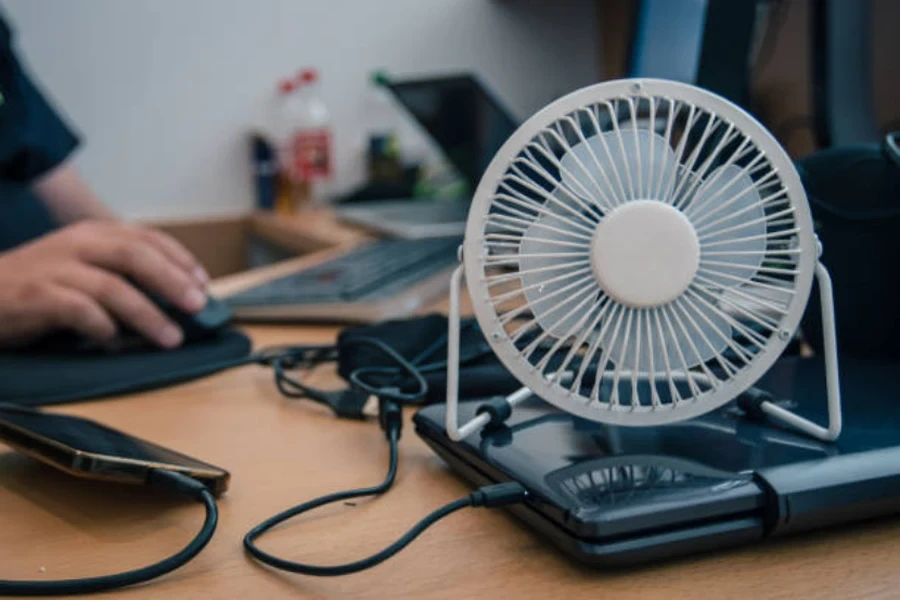
The cooling fan market has witnessed substantial growth over the years, evolving in response to changing technological landscapes and user preferences. As 2024 approaches, understanding these trends and anticipating future shifts is vital for industry professionals aiming to stay ahead.
Evolution of the cooling fan market
The evolution of the cooling fan market has been marked by a consistent rise in demand, spurred by the increasing need for energy-efficient solutions in residential, commercial, and industrial settings. In 2022, the global cooling fan market reached a value of around US$ 7.9 Billion and is anticipated to surpass US$ 21.2 Billion by 2032. Technological advancements have led to the development of smarter, more efficient fans that not only cool but also improve air quality and reduce energy consumption. Innovations in design and functionality, such as bladeless fans and smart connectivity, have transformed user expectations, pushing manufacturers to continuously innovate.
Consumer preferences have also shifted, with a growing emphasis on sustainability and aesthetics. The market has seen a rise in demand for eco-friendly products that align with green building standards and contribute to lower carbon footprints. Additionally, consumers now seek designs that complement modern interiors, leading to sleeker, more stylish cooling solutions.
Predicting the future
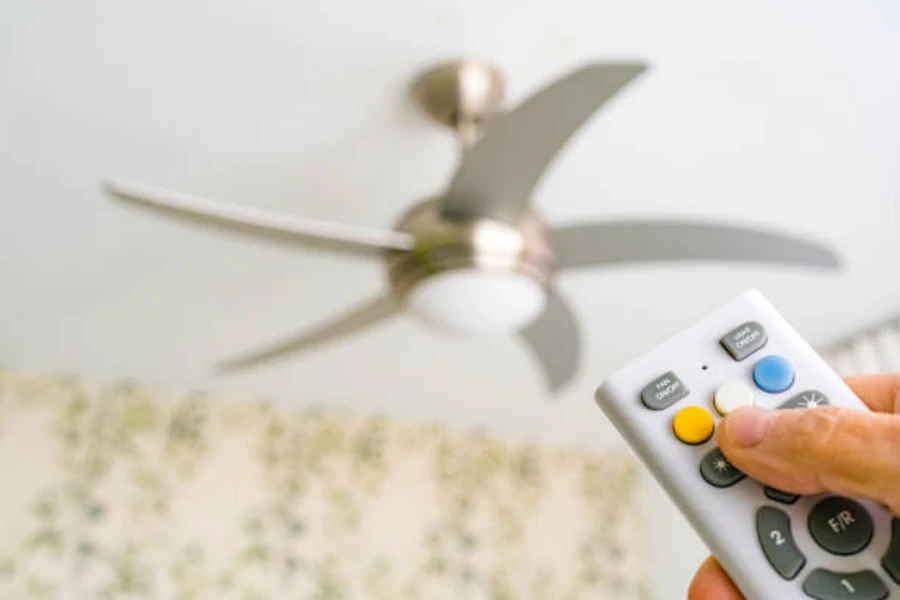
Looking towards 2024, the market is set to continue its trajectory of growth and innovation. Predicting the future, one can expect to see further integration of smart technology, with fans becoming more interconnected and responsive to user environments. The integration of AI and IoT is anticipated to offer personalized cooling experiences, adapting to individual preferences and environmental conditions to optimize performance and energy usage.
The trend towards sustainability is expected to strengthen, with advances in material science and energy-efficient technologies leading to even more eco-friendly models. As regulatory pressures increase and consumer awareness grows, manufacturers will likely invest more in sustainable practices, from production to product lifecycle.
Market data suggests a continued expansion of the cooling fan sector, with a particular increase in specialized products catering to niche markets. The industrial sector, for instance, is expected to see a rise in heavy-duty, high-efficiency fans designed for extreme environments, reflecting the broader industrial focus on safety and operational continuity.
In summary, the cooling fan market in 2024 is poised to be a dynamic and innovative space, shaped by technological advancements, consumer preferences, and a growing emphasis on sustainability. For industry professionals, staying informed of these trends and understanding the underlying drivers of market evolution will be key to making strategic decisions and selecting products that not only meet the current needs but also anticipate future demands. As the market continues to evolve, the ability to adapt and innovate will define success in the cooling fan industry.
Selection strategies: What to consider
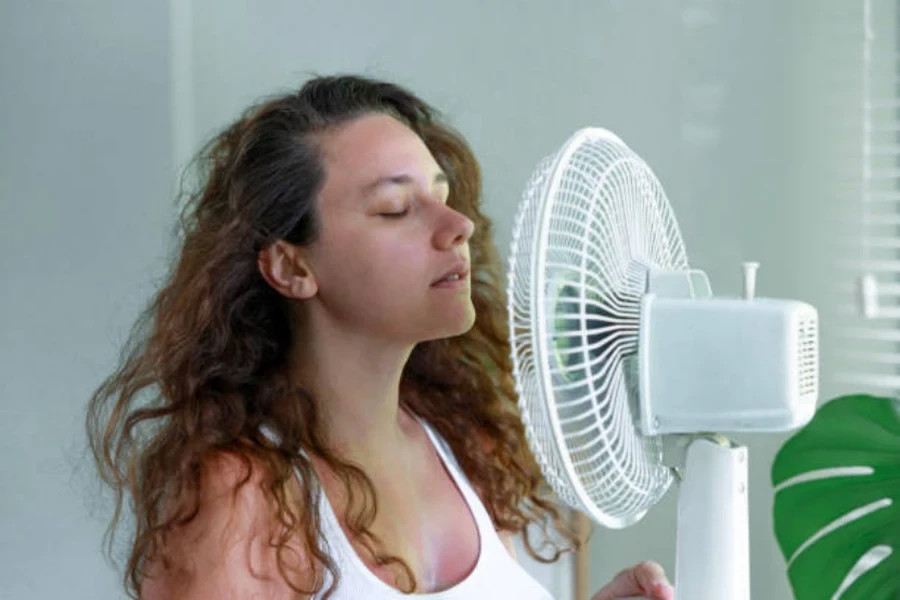
In the realm of cooling fans, selecting the optimal product requires a multifaceted approach, combining a thorough understanding of performance metrics, aesthetic and additional features, as well as budget and brand reputation considerations.
Performance metrics
When selecting cooling fans, performance metrics are essential to ensuring that the right product is chosen for the specific needs of an environment. The Air Movement and Control Association (AMCA) International estimates that fans account for 30 to 40 percent of commercial-building HVAC energy consumption, making the choice of an efficient fan a significant step towards reducing overall energy use.
Airflow Capacity: One of the primary metrics to consider is the fan’s airflow capacity, often measured in cubic feet per minute (CFM). This measure dictates how much air the fan can move and is crucial for determining its cooling effectiveness in the intended space. For instance, a larger room would require a fan with a higher CFM to ensure adequate air circulation.
Noise Level: Another critical factor is the noise level, especially in environments where quiet operation is necessary. Measured in decibels (dB), lower noise levels are preferable for spaces like offices or bedrooms.
Energy Efficiency: Energy efficiency is also a key consideration, particularly in light of increasing environmental concerns and energy costs. The efficiency of a fan can significantly impact the overall energy consumption of a building. It’s important to look at the efficiency rating of a fan and consider how it fits into the broader energy management strategy of the facility.
Fan Efficiency Grade (FEG): The FEG is a commonly applied metric that provides a classification system for fans based on their peak aerodynamic efficiency. It is particularly useful for segregating fans during the selection process. FEG considers the fan’s peak efficiency and is accompanied by an allowable selection range, or “window,” helping decision-makers to choose fans that operate efficiently within a certain range. This ensures that even a fan with a high peak efficiency is selected to operate close to this peak, minimizing energy use.
Performance-Based Efficiency Requirement (PBER): PBER is another metric formulated to address the dilemma of unducted or low-pressure fans. It provides a minimum required efficiency based on the useful work performed at a given operating point (airflow and pressure). This metric is particularly valuable when selecting fans that may operate in varied conditions, as it takes into account the actual conditions under which the fan will be used, rather than just its maximum potential efficiency.
Aesthetic and additional features
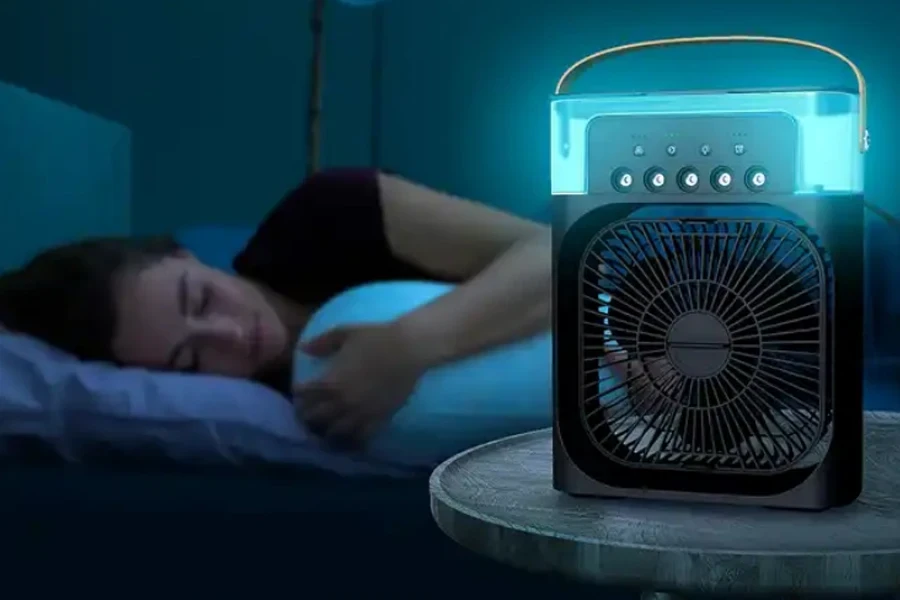
When selecting the right cooling fans, aesthetic appeal and additional features play a significant role in the decision-making process, especially for environments where design and functionality are equally important.
Smart Ceiling Fans: The integration of smart technology into ceiling fans is a trend that’s gaining momentum. Modern smart ceiling fans can be controlled via voice commands or smartphone apps, allowing adjustments to speed, direction, and lighting effortlessly. With built-in Wi-Fi and compatibility with virtual assistants, these fans offer not just convenience but also energy savings by allowing users to schedule operations and maintain optimal conditions without manual intervention.
Energy-Efficient Designs: With an increasing focus on sustainability, energy-efficient ceiling fans are becoming a priority. These fans are designed to consume less electricity while delivering optimal airflow. Features like DC motors, which are known for their energy-saving capabilities, LED lights for long-lasting and efficient illumination, and variable speed settings, allow users to fine-tune their energy consumption according to their needs. This not only reduces operational costs but also supports environmental sustainability efforts.
Designer Ceiling Fans: As ceiling fans become a part of the interior decor, the variety in styles, finishes, and materials has expanded. Designer ceiling fans offer a wide range of aesthetic choices to complement any space, from sleek and modern designs to vintage and rustic looks. They serve as both a functional appliance and a design statement, becoming the centerpiece of a room with their unique designs and attention to detail. The choice of a designer fan can significantly influence the ambiance and aesthetic appeal of a space.
LED Light Ceiling Fans: Combining cooling and lighting, LED light ceiling fans are a versatile choice for many spaces. These fans come with built-in LED lights, providing bright and efficient illumination while being energy efficient. LED lights not only consume less energy than traditional bulbs but also have a longer lifespan, making them a cost-effective and eco-friendly option. These fans offer the dual benefit of improving air circulation while also providing task or ambient lighting, making them a practical choice for various settings.
Budget and brand reputation
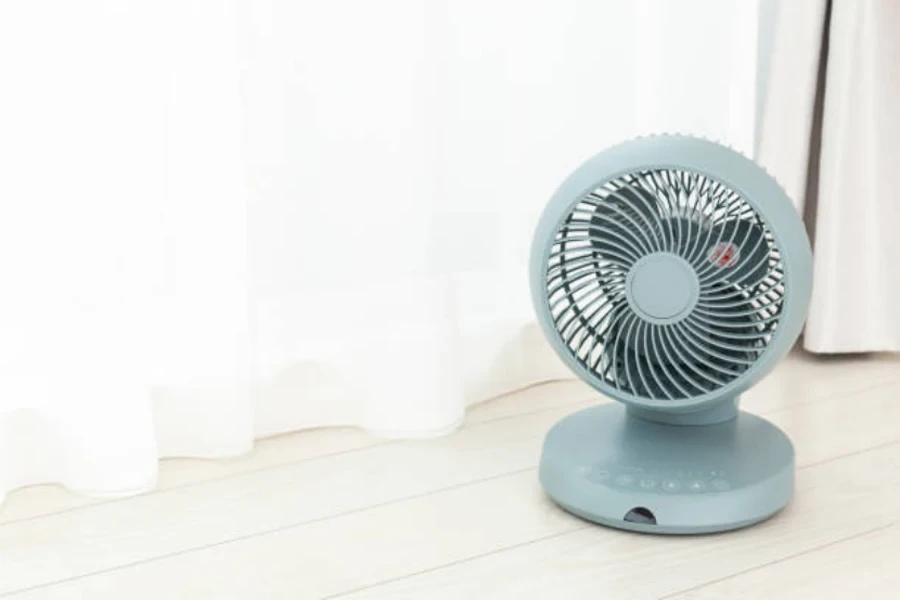
Cost-Effectiveness: The initial cost of a fan is only one part of the equation. It’s essential to consider the total cost of ownership, which includes not only the purchase price but also the operational and maintenance costs over the fan’s lifespan. An inexpensive fan that consumes a lot of energy may end up costing more in the long run compared to a more efficient, albeit pricier, model.
Brand Reputation and Reliability: The reputation of the brand can provide insight into the quality and reliability of the product. Established brands with a history of quality and innovation are often more reliable. Looking at customer reviews, warranty terms, and the brand’s history can give a good indication of what to expect from their products.
Warranty and After-Sales Service: A comprehensive warranty can protect against defects and other issues, providing peace of mind and potentially saving money on repairs. Additionally, good after-sales service ensures that any problems are quickly and effectively resolved, minimizing downtime and inconvenience.
In conclusion, selecting the right cooling fan is a strategic decision that goes beyond mere specifications. It involves a comprehensive evaluation of performance, aesthetics, additional features, budget, and brand reputation. For industry professionals, understanding these aspects is crucial in making informed decisions that meet their specific needs while ensuring quality and value. As the market continues to evolve, staying informed on these factors will be key to navigating the diverse and dynamic landscape of cooling fan options.
Leading models: Performance and features

In the competitive landscape of cooling fans, benchmarking top performers is essential to understand which models stand out in terms of performance and consumer ratings. Here are some of the leading models that have made a mark for their exceptional features and capabilities.
Vornado 630 Mid-Size Whole Room Cooling Fan
The Vornado 630 is not just any fan; it’s a powerhouse in a compact package. This model is specifically designed to cater to those needing powerful airflow in smaller spaces. Its ability to push air up to 70 feet is attributed to Vornado’s signature Vortex air circulation technology, which moves air more efficiently and effectively than traditional fans. Despite its size, users report that its performance rivals that of much larger fans. The three-speed manual control allows users to customize the airflow to their preference, making it versatile for various settings. Although it lacks remote control, its reliability is underscored by a robust five-year warranty, ensuring long-term satisfaction.
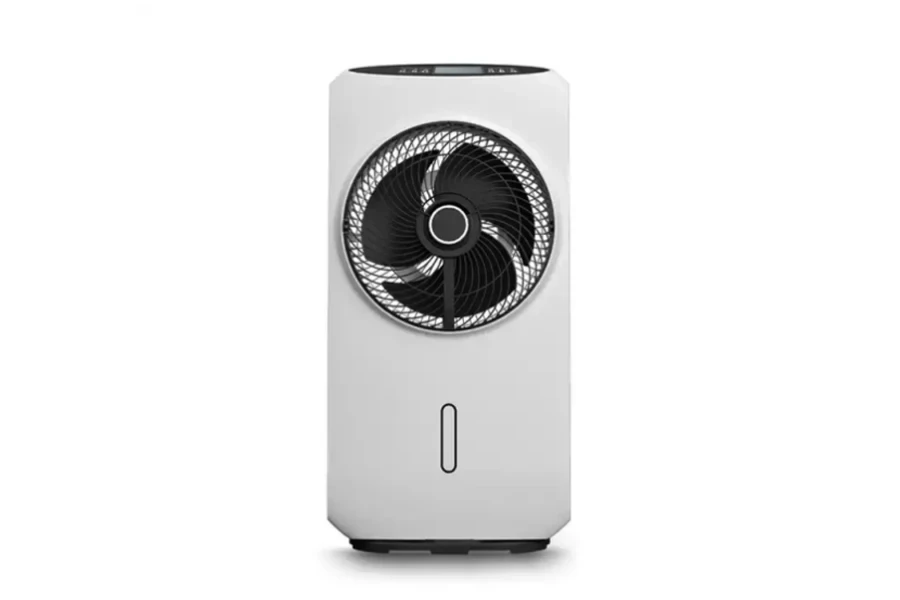
Lasko 3300 Wind Machine Cooling Fan
The Lasko 3300 sets itself apart in the realm of box fans. Where others fall short in power and noise control, the Lasko 3300 excels, providing ample cooling power with a whisper-quiet operation. Its 5-blade design is engineered to maximize airflow while minimizing noise, making it a preferred choice for those seeking a balance between efficiency and comfort. The fan doesn’t boast advanced features like smart connectivity, but it offers straightforward, manual controls that are easy to use, and its portable design with an easy-grip handle ensures it can be moved wherever cooling is needed.
Lasko T42951 Stand Up Cooling Fan
The Lasko T42951 is a testament to the brand’s commitment to quality and innovation. Its sleek, tall design makes it an ideal fit for tight spaces without compromising on cooling power. Users can tailor the airflow with three speed settings, and the nighttime feature is a thoughtful addition, gradually reducing the speed for a comfortable, undisturbed sleep. This fan is particularly noted for its whisper-quiet operation even at higher speeds, making it a perfect companion for any setting where noise is a concern. Its oscillating motion ensures even distribution of air, offering relief from stuffiness and heat in larger rooms.
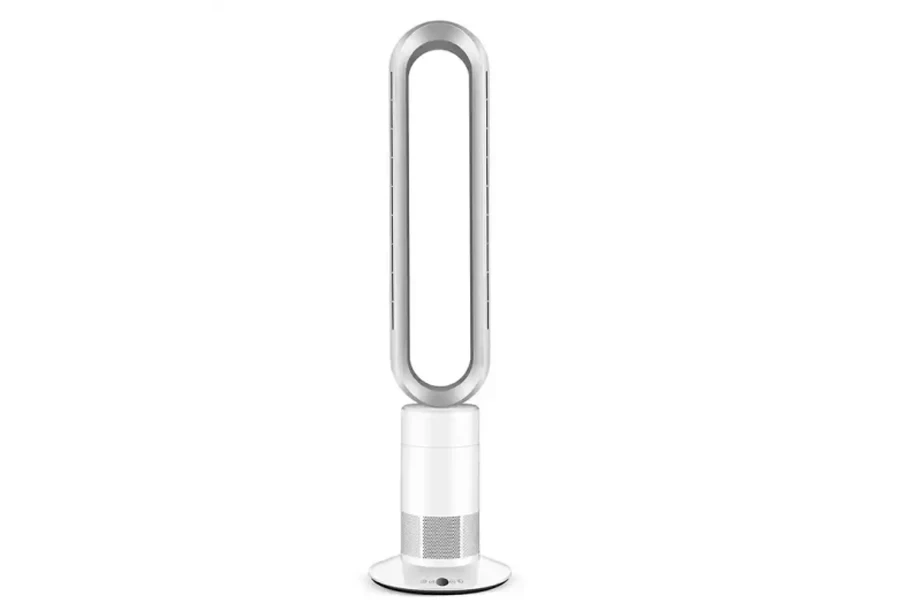
Dyson Cool AM07 Air Multiplier Cooling Fan
The Dyson AM07 is where technology meets sophistication. This model is a part of Dyson’s innovative range of bladeless fans, using patented Air Multiplier technology to create a powerful, steady stream of cool air. Its bladeless design not only makes it safe around children but also easy to clean and maintain. The fan offers ten airflow settings, controlled via a curved, magnetized remote that conveniently stores on the fan itself. The LED digital display adds a modern touch, and the wide range of programmable features, including an automatic shut-off timer, makes it a premium choice for those looking for advanced functionality and style.
Vornado 783 Full-Size Whole Room Air Cooling Fan
The Vornado 783 is a full-size fan that promises to deliver whole-room cooling unlike any other. Instead of oscillating back and forth, it uses Vornado’s Vortex Technology to create a continuous vortex of air that circulates throughout the entire room. This technology ensures that everyone in the room benefits from the cooling effect, not just those in the direct path of the airflow. It’s adjustable in height and tilt, offering further customization to direct the airflow where it’s needed most. With three-speed settings, users can find the perfect balance of cooling power and noise level for their environment. Its sturdy build and 12-pound weight make it a durable and stable option for both home and office use.
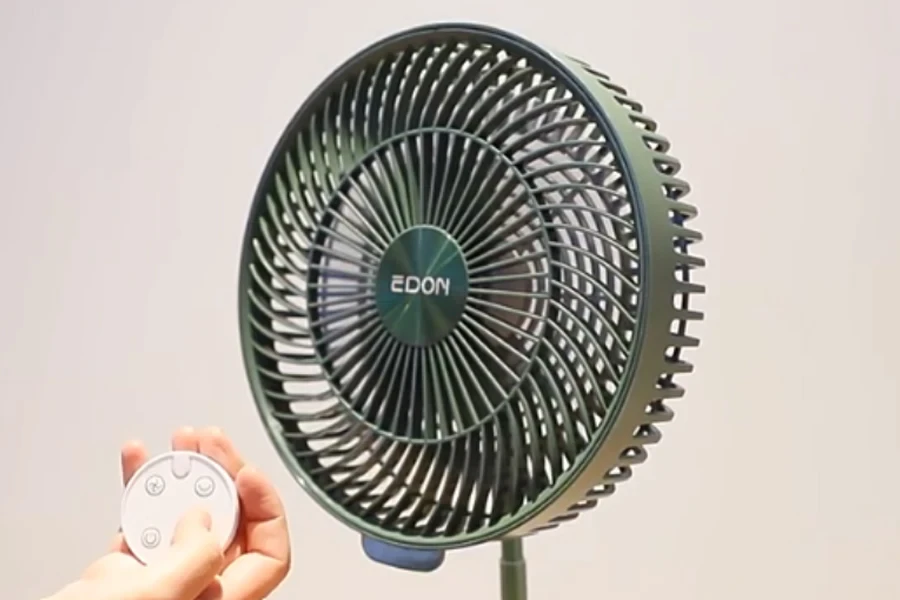
Lasko 3733 Cooling Fan
The Lasko 3733 is an upgraded version of its popular predecessor, maintaining the classic box fan design with enhanced features. It’s designed to move a significant amount of air with its three-speed settings while maintaining a quiet operation. The fan’s Save-Smart technology is a standout feature, ensuring it consumes less than 2 cents an hour to run, making it an economical choice for continuous use. Its compact and lightweight design, coupled with an easy-to-carry handle, makes it highly portable. The Lasko 3733 doesn’t just move air; it does so efficiently and economically, making it a favorite for those who appreciate a straightforward, effective cooling solution.
Vornado Silver Swan Table Fan
Embracing a retro Art Deco aesthetic, the Vornado Silver Swan is more than a cooling device; it’s a piece of decor. The fan’s all-metal construction ensures durability and stability, while its 3-speed settings provide customizable airflow. It’s not just the looks that impress; the large blades are effective at distributing air throughout the room. Its oscillating and tilting capabilities allow for directed airflow, making it a versatile choice for personal cooling. Whether it’s placed in a kitchen or a home office, the Silver Swan adds a touch of elegance while providing reliable performance.
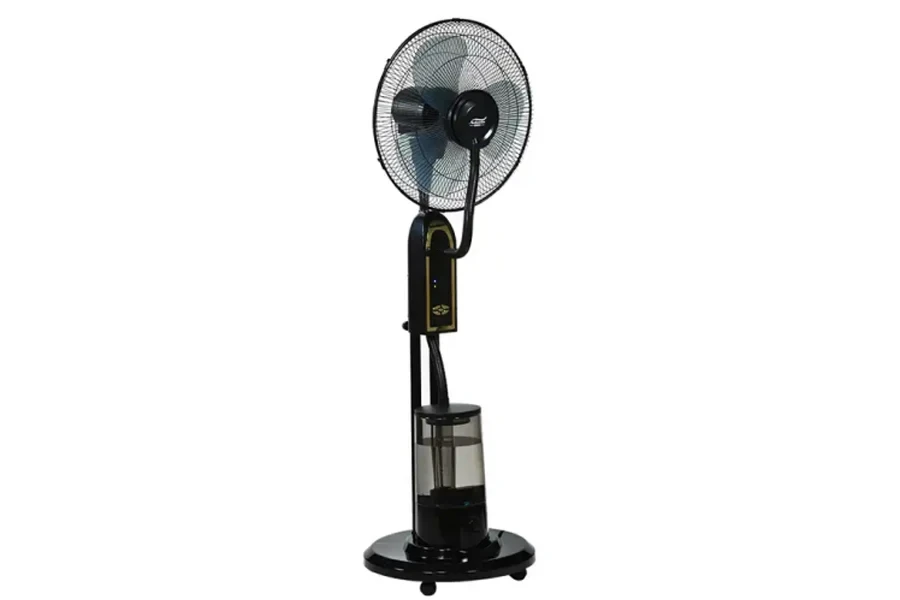
PureFlow QT7- Bladeless 90-degree Oscillating Fan
The pureFlow QT7 is at the forefront of bladeless fan technology, offering a safe and efficient cooling solution. Its distinctive bubble-type profile isn’t just for aesthetics; it allows for 90-degree horizontal and vertical oscillation, ensuring widespread air distribution. With 12 different speed settings, it’s one of the most versatile fans on the market, allowing for precise control over airflow. Its bladeless design makes it an ideal choice for households with children and pets, eliminating the risk of accidents. The fan’s energy efficiency and safety features make it an innovative and responsible choice for modern homes.
BLACK+DECKER BFSR18B 18 in. Stand Fan
The BLACK+DECKER BFSR18B combines functionality with user-friendly features. It comes with three-speed settings and 18-inch blades for powerful airflow, along with height and tilt adjustability for targeted cooling. The inclusion of a remote control adds convenience, allowing users to adjust settings from across the room. The fan’s solid engineering and build quality are backed by a 3-year limited warranty, ensuring reliability and longevity. Its ability to oscillate increases its effectiveness, and its intuitive control panel makes operation simple. The BFSR18B offers a combination of performance, convenience, and quality at an affordable price, making it an excellent choice for those seeking a dependable cooling solution.
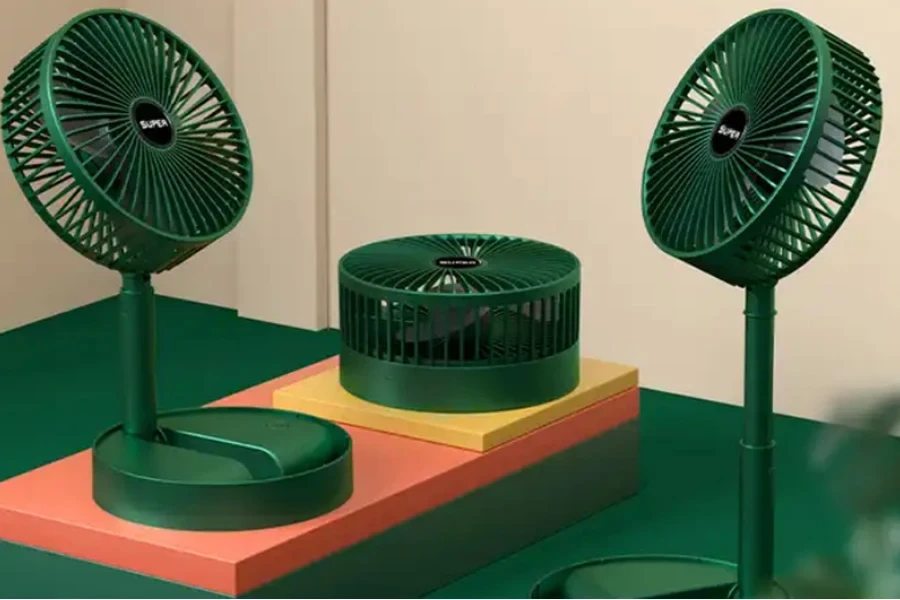
These leading models showcase a range of features and technologies that cater to diverse needs, from quiet operation and energy efficiency to innovative design and advanced control options. When selecting a cooling fan, considering these top performers can provide a benchmark for what to expect in terms of performance, features, and consumer satisfaction.
Conclusion
As industry professionals navigate the ever-evolving cooling fan market, understanding the nuances of performance metrics, aesthetic considerations, and the unique features of leading models is imperative. The insights provided aim to empower informed decisions, ensuring that selections meet both operational needs and align with environmental and budgetary considerations. The upcoming year promises further innovations and choices, making continuous awareness and evaluation essential for maintaining a competitive edge and ensuring optimal cooling solutions.



